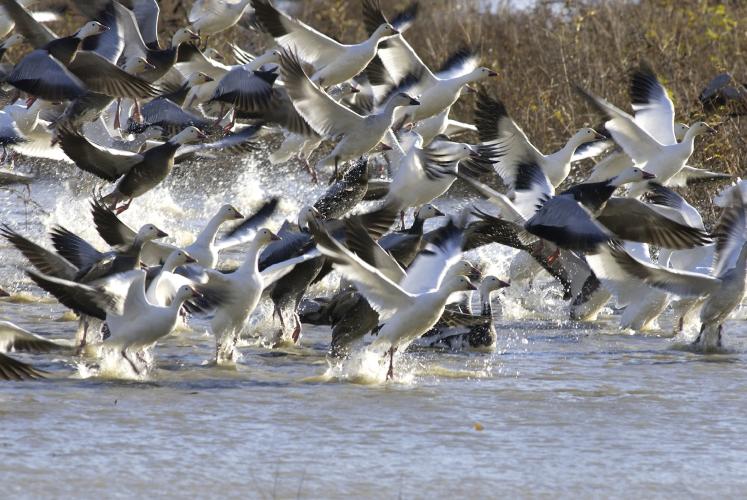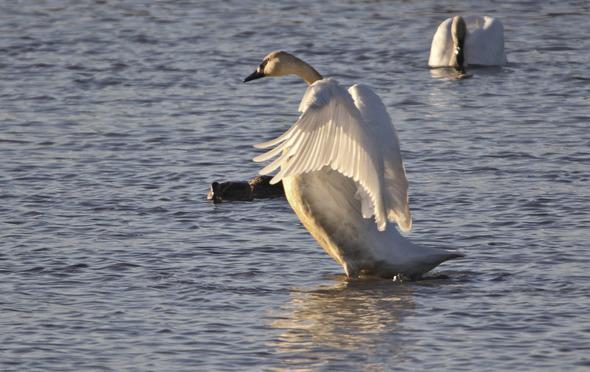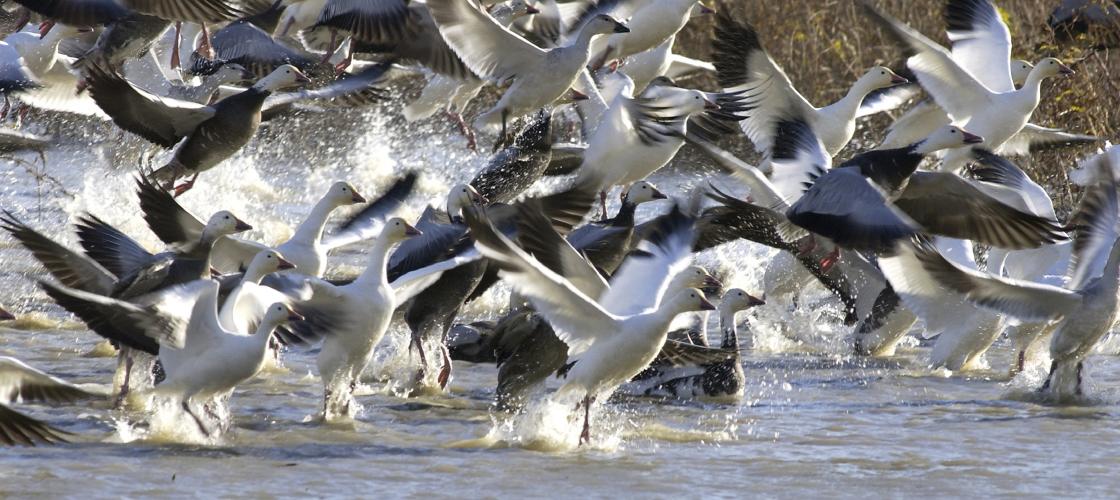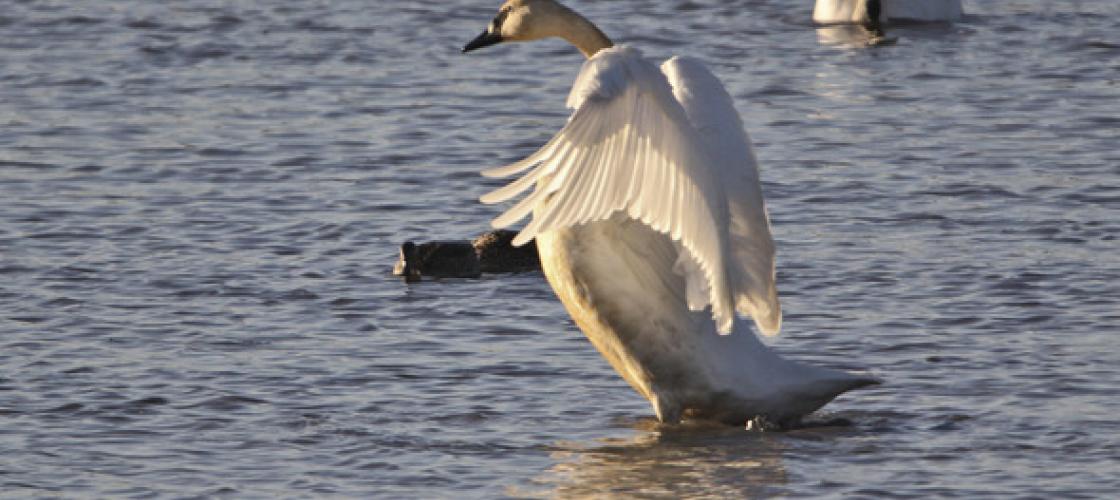The reviews call it magnificent; a feast for the eyes and ears. And the location a hidden gem, one for the bucket list. One visitor summed it up as, “Nature is Lit!"
One of the greatest migration spectacles in the Midwest happens in Missouri. This is one crowd you can safely stand in the midst and watch teems of waterfowl block out the sky at peak times. Stand out visitors include massive quantities of snow geese, a diversity of ducks and birds, trumpeter swans, pelicans, bald eagles, herons and more. You can also view resident wildlife including deer, beavers, muskrats, and turtles.
The best time to see the show is between Thanksgiving and Christmas before the waters freeze and our wild visitors move south. One of the best places for viewing is Loess Bluffs National Wildlife Refuge, north of St. Joseph. Formerly known as Squaw Creek, Loess Bluffs was established as a wildlife refuge in 1935 by Executive Order by President Franklin D. Roosevelt. Here you'll find driving tours, hiking trails, and a boardwalk to watch wildlife move across sky, water, and land. Bring your camera and binoculars on this wild and scenic adventure.
Here's an expert review by Mike Blair on the place to go to see the show: "As a wildlife photographer and outdoors television producer, I travel extensively through America's interior. And Missouri's Loess Bluffs NWR ranks right at the top of my favorite areas for wildlife observation. Fall migration is spectacular, and mid-November through freeze-up presents an amazing opportunity to see birds and animals from the comfort of your car. If you've never been, take a road trip and experience this wonderful area."
See our wild visitors in action in the video below.
Learn more about Loess Bluffs Natural Wildlife Refuge
Exploring the Loess Hills
The Loess Hills are the perfect destination to watch migrating waterfowl! They are a unique geological formation that offers incredible vistas. Loess hill prairie communities are endangered in Missouri, and the small remnants that still exist are threatened by overgrazing, woody invasion, erosion, and homesite development. Here are two you can visit:
The Brickyard Hill Loess Mound Natural Area is a place to see plants and animals characteristic of the Great Plains of central Nebraska and Kansas without having to leave Missouri. Enjoy commanding views of the Missouri River floodplain and peer into the state of Nebraska to the west.
The Brickyard Hill Loess Mounds Natural Area is on the southwest side of the area. Dry loess hill prairies, found only in this corner of Missouri and the river bluffs in extreme western Iowa, are located on the blufftops here.
Nine uncommon state-listed plant species better adapted to the more arid Great Plains to the west are found in these hill prairies.
The Star School Hill Prairie Conservation Area is characterized by rugged loess hills adjacent to the Missouri River floodplain.
Star School Hill Prairie Natural Area features dry prairies on ridge tops which can be seen from the parking lots on both the north and the south tracts. These ridge tops offer expansive views of the Missouri River valley - on a clear day, four states (Missouri, Iowa, Nebraska, and Kansas) can be seen.
Visit the MDC’s “Places to Go” tab for more on the Brickyard Hill Loess Mound Area and the Star School Hill Prairie Conservation Area.




Recent Posts
























